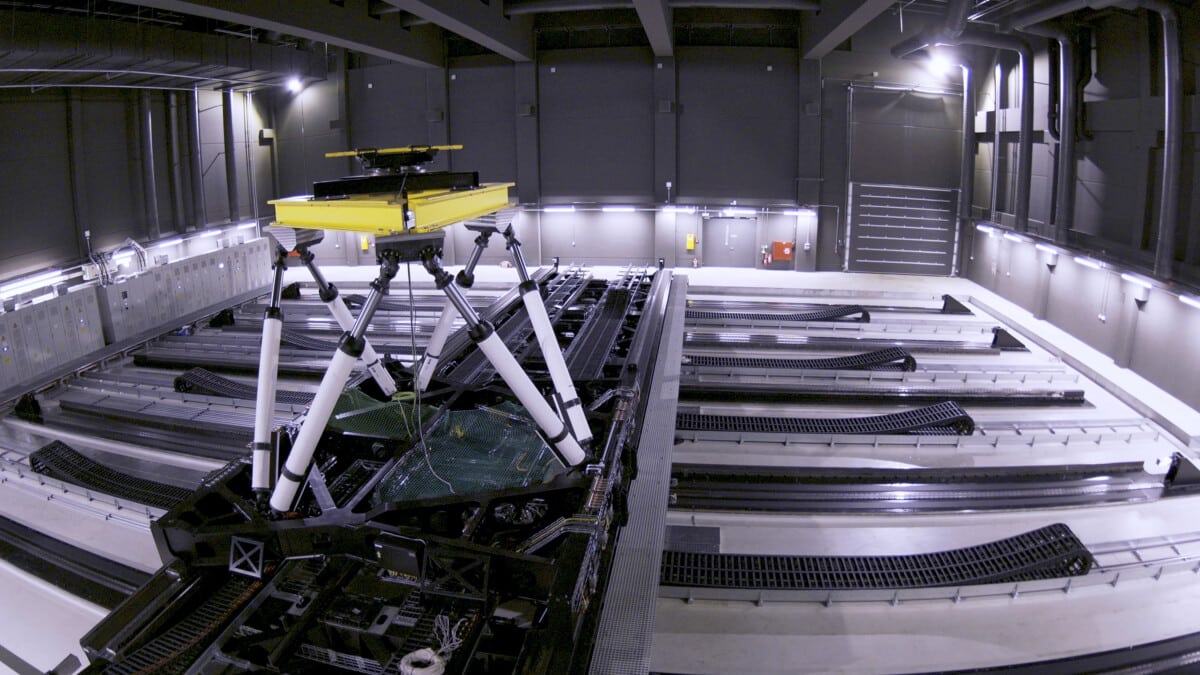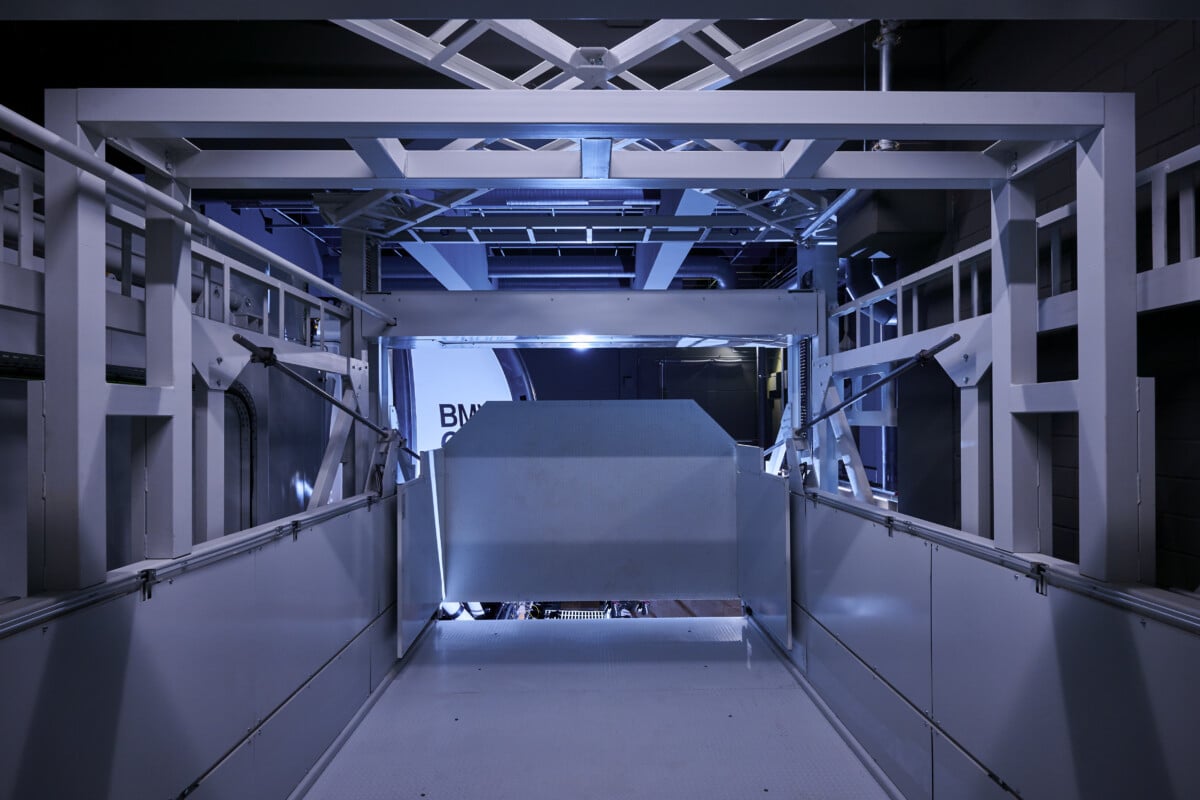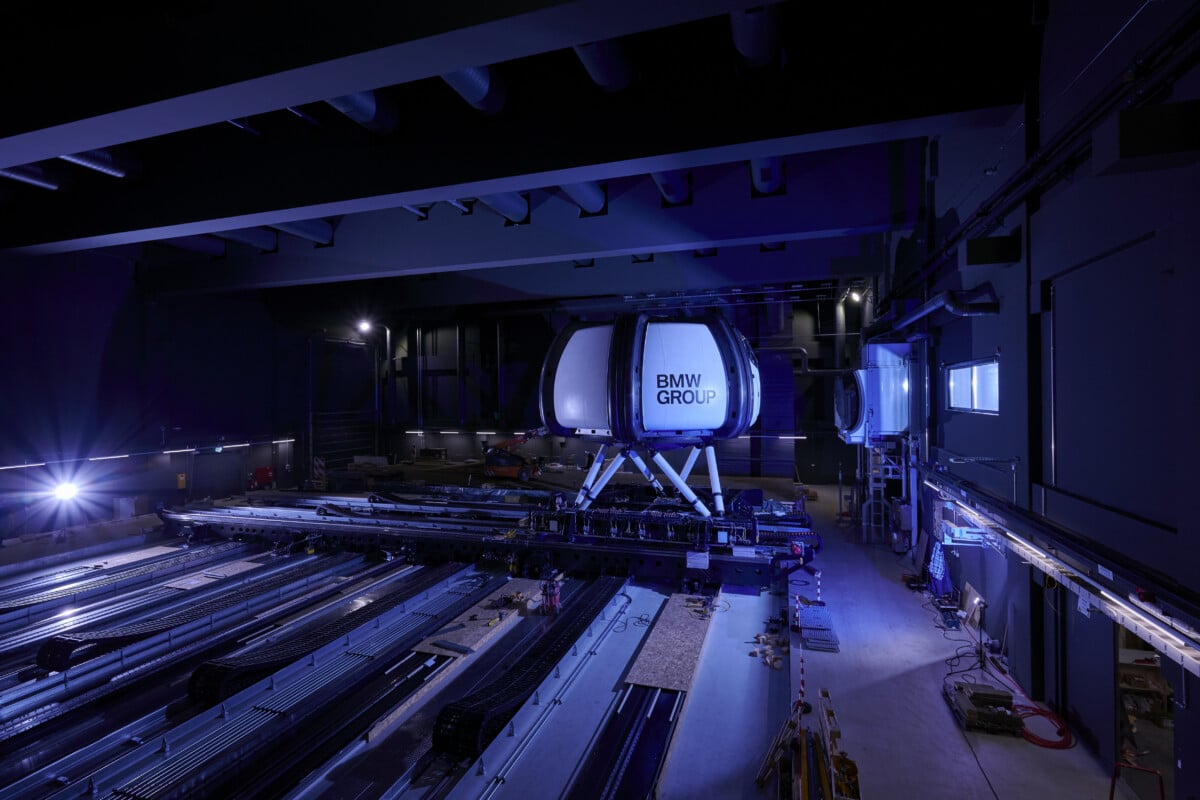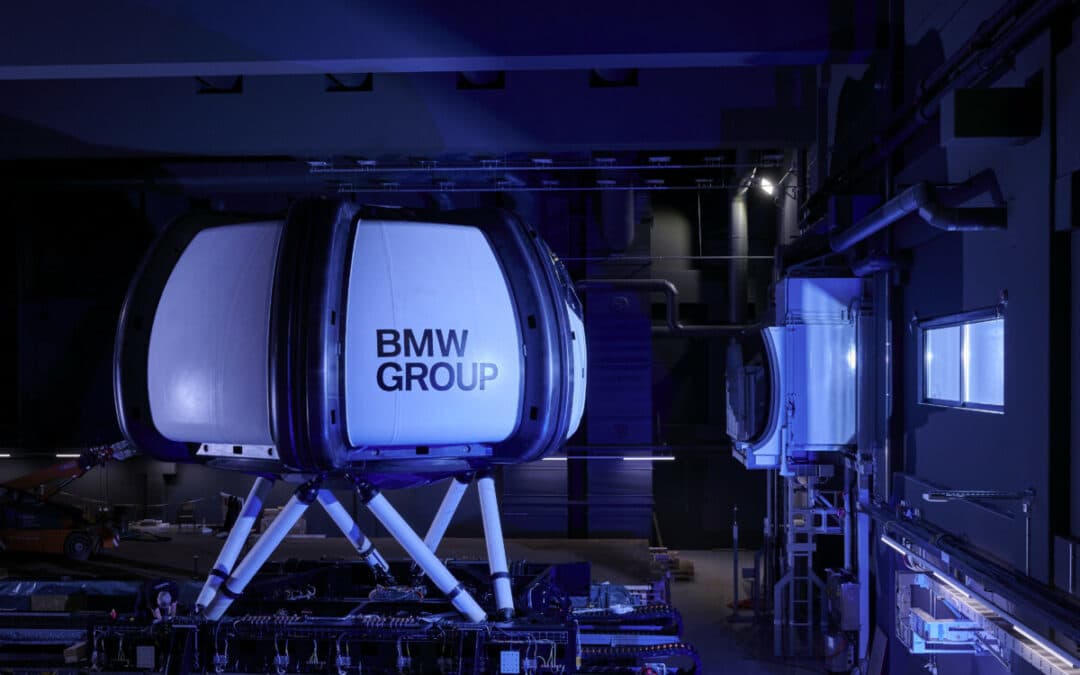“We made the impossible possible.” (Emmanuel Chevrier, CEO)
An interview with Tinhinan Zamoum, Project manager, and Christian Schost, Product Marketing Manager at AVSimulation
First, can you tell us more about the historical and philosophical context of the project?
C. Schost: Like many other manufacturers, BMW must have the tools to prepare for new modes of transport: especially autonomous vehicles. The group already has experience in simulation since it has been using a dynamic simulator for now 15 years. BMW has invested in a new simulation centre – located in Munich, the brand’s historic headquarters – where many tools around simulation are concentrated, including several driving simulators.
Their goal? Having the most efficient tools in the development of the vehicles of the “future”.
What are the challenges of building two simulators ? What differentiates one simulator from the other?
T. Zamoum: Again, it’s related to the simulation center. BMW has a large-scale project at the level of global simulation, as we said, with several simulators. Among these simulators, they had this need for 2 large simulators that would allow to have an immersive experience of high quality: the most detailed and realistic possible. They are part of a global approach with a technological simulation center

C. Schost: The multiplicity of means makes it possible to carry out several studies in parallel. This need can be found in several car manufacturers around the world. Many questions are raised by the vehicle models under development and the new driving habits.
The two HF and HD simulators leverage specific technological solutions to cover the widest possible range of driving situations.
|
The HF (High Fidelity) simulator is a 9-degree-of-freedom system. Its design allows long accelerations. It has a lace table as well as X and Y rails of the same length which means that you can enjoy the best performance in all driving situations. The HD (High Dynamics) simulator provides even higher speeds and accelerations thanks to a lighter structure, with a single axis of movement on the ground also exploiting the technology of linear motors. The entire simulator has 7 degrees of freedom. It offers the possibility of installing the simulation cockpits in longitudinal or transverse to adapt to driving scenarios. These simulators share a common base and have exchangeable cockpits, but their design is adapted to the different driving situations of the test protocols. |
What made the difference when choosing the manufacturer?
C. Schost: Only a few engineering teams in the world can bring the level of expertise and experience required to design simulators of this size.
Bosch Rexroth and AVSimulation have already joined forces to deliver dynamic simulators around the world for more than 10 years. A double common objective has linked Bosch Rexroth and AVSimulation in the development of these simulators: to develop an unparalleled level of immersion and offer a perfect level of fidelity for all the senses of the driver.
The quality of integration makes it possible to preserve the driver experience to the maximum.
AVSimulation and Bosch Rexroth are the clear leaders on the market for such simulators. They bring architects and integrators for global simulation situations and the expertise in the development, design and manufacture of tools & components with very high performance (dome, cockpit exchange system, passenger ramp, 3D visual system …).

As a manufacturer, what differentiates these simulators from those delivered in the last 20 years by AVSimulation?
T. Zamoum: What makes the difference in this project is the role of complete integrator we played. We did not supply or design all the elements, the movement system for example, it was our partner Bosch Rexroth who took care of it. For the rest, we are integrator of these two BMW simulators.
C. Schost: In the past, we already had this role of integrator several times but what has changed here is the level of dynamic performance that has really taken a step and led AVSimulation teams to modify and adapt new technological solutions.
The new performance levels have an overall impact on the entire mechanical design of the simulator: the accelerations of several G applied to the simulator require extreme optimization in the mechanical design. AVSimulation’s design teams had to surpass themselves and break a few technological barriers to meet these new challenges. AVSimulation has been working hand-in-hand with a network of expert suppliers. The equation is complicated when it is necessary to combine rigidity, optimized weight and maintain an immersion at the highest level for users. Our engineers need to solve similar equations as racing teams in motorsport!
In terms of efficiency, this new generation is also pushing the limits for increased productivity on a daily basis: simulation launch and shutdown operations or cockpit exchange operations have never been faster in other simulators. Driving simulation has reached maturity at the car manufacturers and must provide solutions efficiently.
Two simulators built simultaneously: what were the major implications & challenges you were confronted to?
T. Zamoum: The realization of the two simulators in parallel, even if a little sequenced, proved to be an important challenge for our teams. This required a very significant level of involvement and mobilization, and over a long period of time: from design to delivery. The continuity and sustainability of the service are real criteria for success. It is very important to maintain a constant level of mobilization, without forgetting the complicated period caused by the pandemic.
I think that our mode of operation, in other words our French culture facing a German customer whose approach is different also requires flexibility associated with an engineering approach and tailor-made realization.
What were the major and key stages in the evolution of this project? What is the current status of the project and what are the next steps ?
T. Zamoum: As far as the current project is concerned, all the elements have been physically delivered and installed, for both simulators. We are therefore in the phase called “commissioning” (on-site validation by subset). This phase leads us to the start-up and the overall “commissioning”: testing the simulator. Finally, it is the phase of “recipe on site”.
The impressive size of the simulators and the performance achieved requires longer validation phases as well as the presence of our engineers for several weeks.

C. Schost: The preparatory phases in pre-sales are quite striking in my opinion. In 2017, during the joint meetings between the teams of BMW, Bosch Rexroth and AVSimulation, this new simulator model was just a sketch on a flipchart. This year, the simulators are getting started… I find it really impressive.
T. Zamoum: On AVSimulation’s side -in terms of implementation- the most important and impactful phase was the installation of the very first carbon dome on the movement platform (last quarter 2020). Everything that we have been able to imagine together in the preparatory phases, as well as in the validation of the design, became reality. This step was important for all of us, as well as for the customer: the simulator was physically there.
The marriage between all the building elements, manufactured in different places (I am especially thinking of the Production Workshops of the Sogeclair group where we made many parts for the project) and assembled on site is also impressive, especially when it is a success.
What is next for AVSimulation?
T. Zamoum: In terms of complexity of technology, size and performance, the BMW project is in itself a very large-scale project, in which we are delighted to have participated. From there, I sincerely think that we can launch on various constructions: large simulators, simulators of medium dimensions, small ones, tailor-made or not…
C. Schost: The best of high technology has been implemented as part of this project. AVSimulation continues its research working in partnership with its suppliers to prepare the simulators of tomorrow. The very specific know-how of high-performance simulators will also be a benefit in the range of medium-sized simulators.
What do you take away from this project, even though it is not finished?
T. Zamoum: It’s just amazing. The dimension of this project, the human mobilization and the energy provided. Not to mention the simultaneity of both HF and HD, it is exceptional. What I would remember is the totally “out-of-the-ordinary” dimension of this project. It is also important to mention that I joined the team while the project was underway and the professional work that comes out of it, applied to such a large dimension is very, VERY impressive. It is a real team of hard-working, passionate collaborators loving their job.

